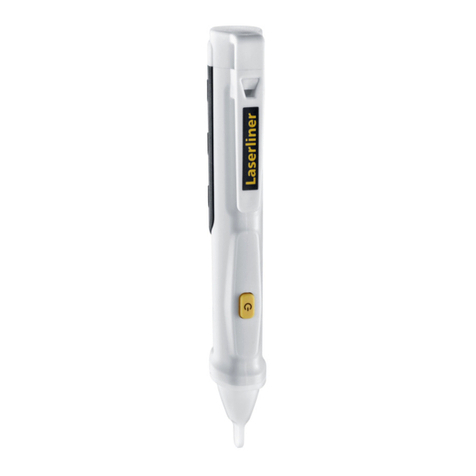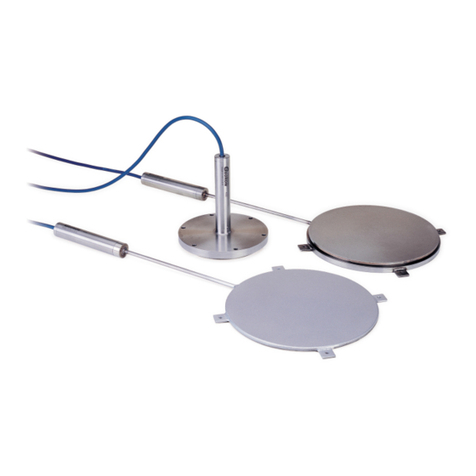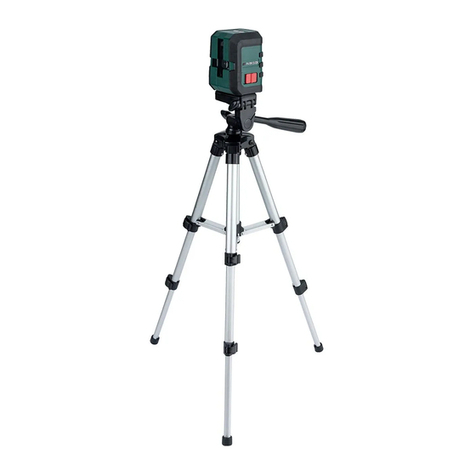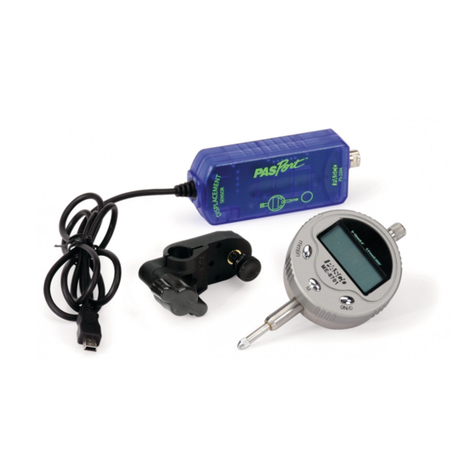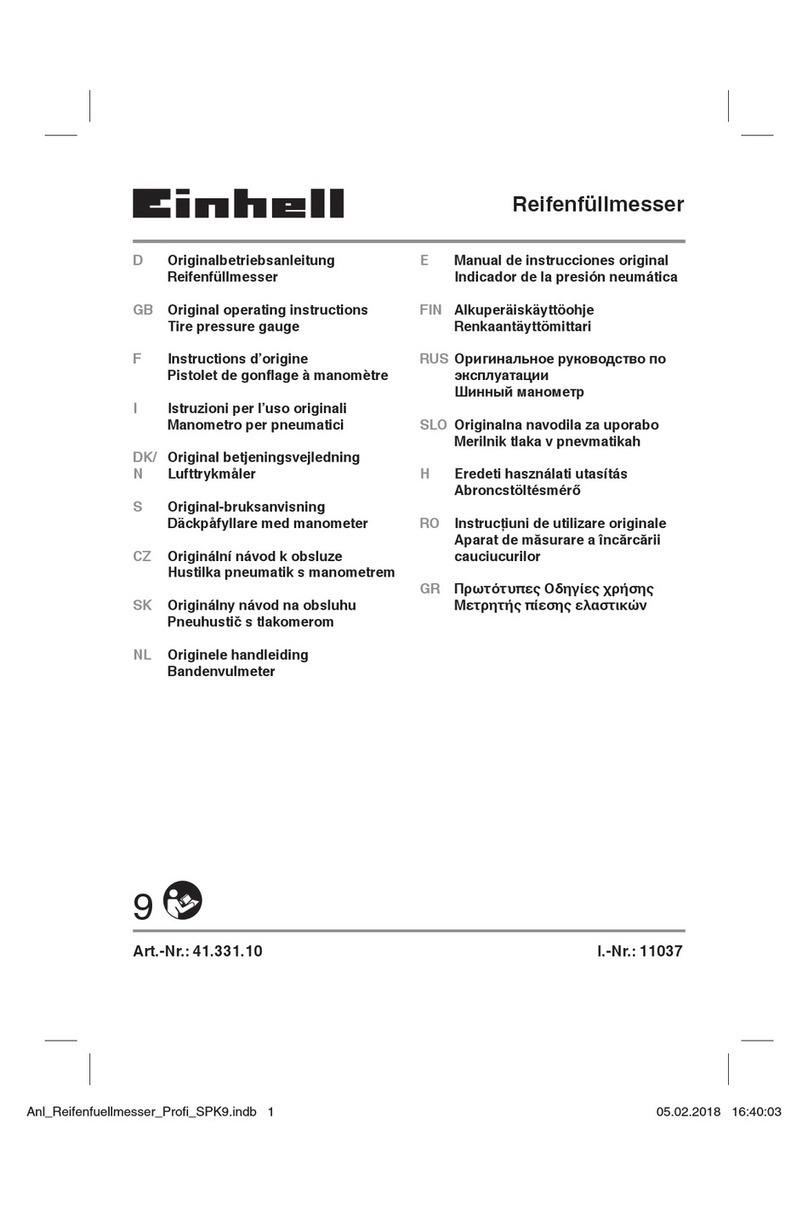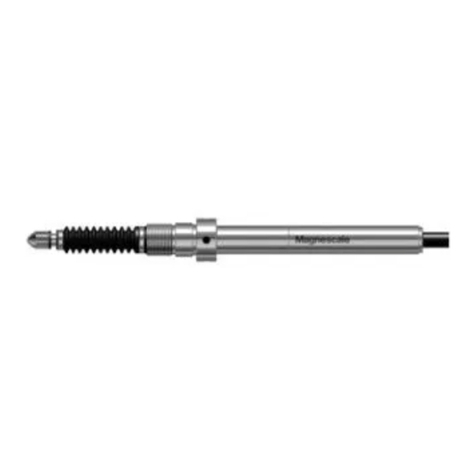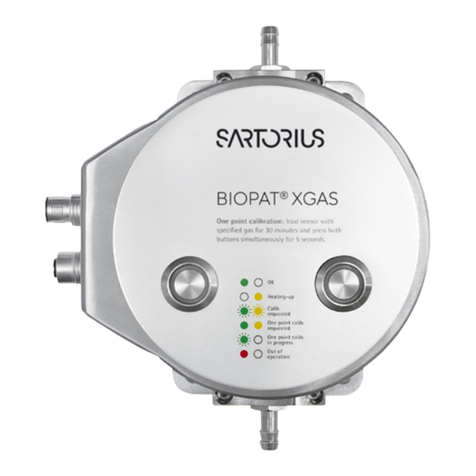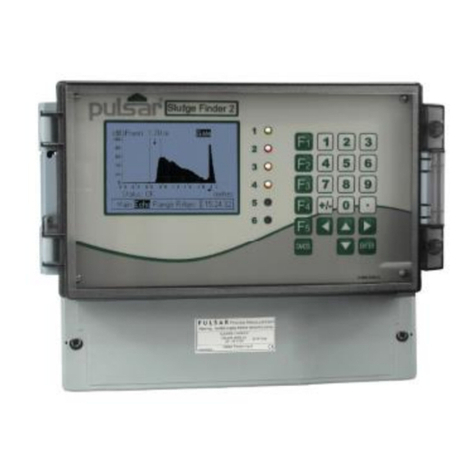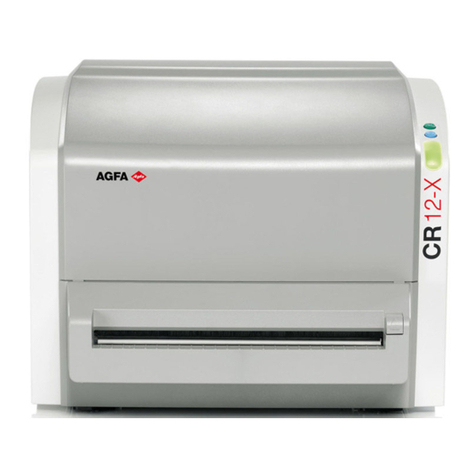RLC PAXC-1/8 User manual

GENERAL DESCRIPTION
The PAXC (PAX Counter Panel Meter) offers many features and
performance capabilities to suit a wide range of industrial applications. The
optional Plug-in Setpoint Alarm Cards allow the opportunity to configure the
meter for alarms if that is a requirement.
The PAXC meter accepts digital inputs from a variety of sources including
switch contacts, outputs from CMOS or TTL circuits and all standard RLC
sensors. The meter can accept directional, uni-directional or Quadrature signals
simultaneously. The maximum input signal varies up to 34 KHz depending on
the count mode function configurations programmed. Each input signal can be
independently scaled to various process values.
The meter provides three different display indications. These include Counter
A, Counter B, and Counter C. Counter A and Counter B indicate the
corresponding input count value. Counter C indicates the sum or difference
between Counter A and Counter B values. Annunciators indicate which display
is being shown.
The front panel keys and three user inputs are programmable to perform
various meter functions. One function includes exchanging parameter lists,
allowing double the number of programmable setpoint, scale factor and count
load values.
The meter can have up to four setpoint outputs, determined by the Plug-in
cards. The Plug-in cards provide dual FORM-C relays (5 A), quad FORM-A
relays (3 A) or either quad sinking or quad sourcing open collector logic
outputs. The outputs can be assigned to any of the three displays. The outputs
can also be independently configured to suit a variety of control and alarm
requirements.
Once the meter has been initially configured, the parameter list may be
locked out from further modification entirely or setpoint, scale factor and count
load values can be made accessible. This lockout is possible through a security
code or user input.
The meter has been specifically designed for harsh industrial environments.
With a NEMA 4X/IP65 sealed bezel and extensive testing to meet CE
requirements, the meter provides a tough yet reliable application solution.
SAFETY SUMMARY
All safety related regulations, local codes and instructions that appear in this
literature or on equipment must be observed to ensure personal safety and to
prevent damage to either the instrument or equipment connected to it. If
equipment is used in a manner not specified by the manufacturer, the protection
provided by the equipment may be impaired.
Do not use this meter to directly command motors, valves, or other actuators
not equipped with safeguards. To do so can be potentially harmful to persons or
equipment in the event of a fault to the unit.
1
MODEL PAXC-1/8 DIN COUNTER PANEL METER
!
6-DIGIT LED DISPLAY (Alternating 8 digits for counting)
!
DUAL COUNT QUAD INPUTS
!
UP TO 3 COUNT DISPLAYS
!
PROGRAMMABLE SCALE FACTORS
!
PROGRAMMABLE FUNCTION KEYS / USER INPUTS
!
FOUR SETPOINT ALARM OUTPUTS (W/Plug-in card)
!
NEMA 4X/IP65 SEALED FRONT BEZEL
CAUTION: Read complete
instructions prior to installation
and operation of the unit.
CAUTION: Risk of electric shock.
DIMENSIONS “In inches (mm)” Note: Recommended minimum clearance (behind the panel) for
mounting clip installation is 2.1” (53.4) H x 5.5” (140) W.
INTERNATIONAL HEADQUARTERS RED LION CONTROLS (UK)
20 Willow Springs Circle, York, Pa. 17402, (717) 767-6511 Tapton Park, Chesterfield, Derbyshire S41 OTZ
Web site- http://www.redlion-controls.com ENGLAND +44 1246 222122 FAX: +44 1246 221222
RED LION CONTROLS
BULLETIN NO. PAXC-X
DRAWING NO. LP0510
EFFECTIVE 3/00

SPECIFICATIONS
1. DISPLAY: 6 digit, 0.56" (14.2 mm) red LED
2. POWER:
AC Versions (PAXC0000):
AC Power: 85 to 250 VAC, 50/60 Hz, 12 VA
Isolation: 2300 Vrms for 1 min. to all inputs and outputs. (300 V working)
DC Versions (PAXC0010):
DC Power: 11 to 36 VDC, 7 W
AC Power: 24 VAC, ± 10%, 50/60 Hz, 9 VA
Isolation: 500 Vrms for 1 min. to all inputs and outputs (50 V working)
3. SENSOR POWER: 12 VDC, ±10%, 100 mA max. Short circuit protected.
4. ANNUNCIATORS:
A - Counter A
B - Counter B
C - Counter C
!" - Upper significant digit display of counter
SP1 - Setpoint 1 Output State
SP2 - Setpoint 2 Output State
SP3 - Setpoint 3 Output State
SP4 - Setpoint 4 Output State
5. KEYPAD: 3 programmable function keys, 5 keys total.
6. COUNTER DISPLAYS:
Maximum display: 8 digits: ± 99999999 (greater than 6 digits display
alternates between high order and low order.)
7. MAXIMUM SIGNAL FREQUENCIES:
To determine the maximum frequency for the input(s), first answer the
questions with a yes (Y) or no (N). Next determine the Count Mode to be
used for the counter(s). If dual counters are used with different Count Modes,
then the lowest frequency applies to both counters.
Notes:
1. Counter Modes are explained in the Module 1 programming section.
2. Listed values are with frequency DIP switch set on HI frequency.
8. INPUTS A and B:
DIP switch selectable to accept pulses from a variety of sources including switch
contacts, outputs from CMOS or TTL circuits, and all standard RLC sensors.
LOGIC: Input trigger levels VIL = 1.5 V max.; VIH = 3.75 V min.
Current sinking: Internal 7.8 KΩpull-up to +12 VDC, IMAX = 1.9 mA.
Current sourcing: Internal 3.9 KΩpull-down, 7.3 mA max. @ 28 VDC,
VMAX = 30 VDC.
Filter: Damping capacitor provided for switch contact bounce. Limits
input frequency to 50 Hz and input pulse widths to 10 msec. minimum.
DUAL COUNT MODES:
When any dual count mode is used, then User Inputs 1 and/or 2 will accept
the second signal of each signal pair. The user inputs do not have the
Logic/Mag, HI/LO Freq, and Sink/Source input setup switches. The user
inputs are inherently a logic input with no low frequency filtering. Any
mechanical contacts used for these inputs in a dual count mode must be
debounced externally. The user input may only be selected for sink/source
by the User Jumper placement.
9. USER INPUTS: Three programmable user inputs
Max. Continuous Input: 30 VDC
Isolation To Sensor Input Commons: Not isolated
Logic State: Jumper selectable for sink/source logic
Response Time: 6 msec. typical; function dependent. Certain resets, stores
and inhibits respond within 25 µsec if an edge occurs with the associated
counter or within 6 msec if no count edge occurs with the associated
counter. These functions include #$%&$', #$%&$(, )*+),$, and &$!%(.
Once activated, all functions are latched for 50 msec min. to 100 msec
max. After that period, another edge/level may be recognized.
10. SETPOINT OUTPUT CARD:
Dual Relay Card:
Type: Two FORM-C relays
Isolation To Sensor & User Input Commons: 2000 Vrms for 1 min.
Working Voltage: 240 Vrms
Contact Rating:
One Relay Energized: 5 amps @ 120/240 VAC or 28 VDC (resistive load),
1/8 HP @ 120 VAC, inductive load
Total current with both relays energized not to exceed 5 amps
Life Expectancy: 100 K cycles min. at full load rating. External RC
snubber extends relay life for operation with inductive loads
Response Time: 5 msec. nominal with 3 msec. nominal release
Time Accuracy: ± 0.01% + 10 msec.
Quad Relay Card:
Type: Four FORM-A relays
Isolation To Sensor & User Input Commons: 2300 Vrms for 1 min.
Working Voltage: 250 Vrms
Contact Rating:
One Relay Energized: 3 amps @ 250 VAC or 30 VDC (resistive load),
1/10 HP @ 120 VAC, inductive load
Total current with both relays energized not to exceed 4 amps
Life Expectancy: 100 K cycles min. at full load rating. External RC
snubber extends relay life for operation with inductive loads
Response Time: 5 msec. nominal with 3 msec. nominal release
Time Accuracy: ± 0.01% + 10 msec.
Quad Sinking Open Collector Card:
Type: Four isolated sinking NPN transistors
Isolation To Sensor & User Input Commons: 500 Vrms for 1 min.
Working Voltage: 50 V. Not isolated from all other commons.
Rating: 100 mA max. @ VSAT = 0.7 V max. VMAX. = 30 V
Response Time: 25 µsec
Time Accuracy: ± 0.01% + 10 msec.
Quad Sourcing Open Collector Card:
Type: Four isolated sinking PNP transistors
Isolation To Sensor & User Input Commons: 500 Vrms for 1 min.
Working Voltage: 50 V. Not isolated from all other commons.
Rating: Internal supply: 24 VDC ± 10%, 30 mA max. total
External supply: 30 VDC max. 100 mA each output
Response Time: 25 µsec
Time Accuracy: ± 0.01% + 10 msec.
11. MEMORY: Non-volatile E2Prom retains all programming parameters and
display values.
12 CERTIFICATIONS AND COMPLIANCE:
SAFETY
EN 61010-1, IEC 1010-1
Safety requirements for electrical equipment for measurement, control,
and laboratory use, Part I
ELECTROMAGNETIC COMPATIBILITY
Note:
Refer to the EMC Installation Guidelines section of this bulletin for
additional information.
13. ENVIRONMENTAL CONDITIONS:
Operating Temperature Range: 0 to 50°C
Storage Temperature range: -40 to 60°C
Operating and Storage Humidity: 0 to 85% max. non-condensing
Altitude: Up to 2000 meters
14. CONNECTIONS: High compression, cage-clamp terminal block
Wire Strip Length: 0.3" (7.5 mm)
Wire Gauge Capacity: One 14 AWG (2.55 mm) solid, two 18 AWG (1.02
mm), or four 20 AWG (0.61 mm).
15. CONSTRUCTION: This unit is rated for NEMA 4X/IP65 indoor use. IP20
Touch safe. Installation Category II, Pollution Degree 2. One piece
bezel/case. Flame resistant. Synthetic rubber keypad. Panel gasket and
mounting clip included.
16. WEIGHT: 10.1 oz (295 g)
2
VIN > 2.5 VDC VIN < 0.7 VDC
Inactive VIN < 0.7 VDC VIN > 2.5 VDC
Active
SINKING INPUTS
5.1 KΩΩpull-up to +12 V SOURCING INPUTS
5.1 KΩΩpull-down
INPUT STATE
Power mains class A
Enclosure class AEN 55011RF interference
Emissions to EN 50081-2
150 KHz - 80 MHz
Level 3; 10 V/rmsEN 61000-4-6RF conducted interference Level 3; 2 Kv power
Level 4; 2 Kv I/OEN 61000-4-4Fast transients (burst) 80 MHz - 1 GHz
Level 3; 10 V/mEN 61000-4-3Electromagnetic RF fields Level 3; 8 Kv airEN 61000-4-2Electrostatic discharge
200 Hz, 50% duty cycle
900 MHz ±5 MHz
Immunity to EN 50082-2
Level 3; 10 V/mENV 50204Simulation of cordless telephones
Single: Counter A or B Dual: Counter A&B
Are any setpoints used? N N Y Y N N Y Y
Is Counter C used? N Y N Y N Y N Y
COUNT MODE (Values are in KHz) (Values are in KHz)
Count x1 34 25 18 15 13 12 97.5
Count x2 17 13 9 7 9 7 5 4
Quadrature x1 22 19 12 10 7 6 4 3.5
Quadrature x2 17 13 9 7 7 6 4 3.5
Quadrature x4 8 6 4 3
FUNCTION QUESTIONS

3
ORDERING INFORMATION
Optional
Plug-In
Cards PAXCDS40Quad Setpoint Sourcing Open Collector Output Card PAXCDS30Quad Setpoint Sinking Open Collector Output Card
Meter
PAXCDS20Quad Setpoint Relay Output Card
TYPE
PAXC0010
PAXCDS10Dual Setpoint Relay Output Card
PAXCDS
Counter Panel Meter, Upgradeable, DC/24 VAC Powered PAXC0000Counter Panel Meter, Upgradeable, AC Powered
PAXC
PART NUMBERSDESCRIPTIONMODEL NO.
SETPOINT ALARMS PLUG-IN CARDS (PAXCDS)
The PAXC series has four setpoint alarm output plug-in cards. Only one of
these cards can be installed at a time. (Logic state of the outputs can be reversed
in the programming.) These plug-in cards include:
Dual relay, FORM-C, Normally open & closed
Quad relay, FORM-A, Normally open only
Isolated quad sinking NPN open collector
Isolated quad sourcing PNP open collector
The card can be installed initially or at a later date. Each optional plug-in card
is shipped with complete installation instructions, however, programming
should be reviewed in Module 6.
OPTIONAL PLUG-IN CARDS
Installation
The PAX meets NEMA 4X/IP65 requirements for indoor use when
properly installed. The unit is intended to be mounted into an enclosed panel.
Prepare the panel cutout to the dimensions shown. Remove the panel latch and
cardboard sleeve from the unit and
discard the cardboard sleeve.
Slide the panel gasket over
the rear of the unit to the
back of the bezel. The
unit should be installed
fully assembled. Insert
the unit into the panel
cutout.
While holding the unit in place, push the panel latch over the rear of the unit
so that the tabs of the panel latch engage in the slots on the case. The panel
latch should be engaged in the farthest forward slot possible. To achieve a
proper seal, tighten the latch screws evenly until the unit is snug in the panel
(Torque to approximately 7 in-lbs [79N-cm]). Do not over-tighten the screws.
Installation Environment
The unit should be installed in a location that does not exceed the operating
temperature and provides good air circulation. Placing the unit near devices
that generate excessive heat should be avoided.
The bezel should only be cleaned with a soft cloth and neutral soap product.
Do NOT use solvents. Continuous exposure to direct sunlight may accelerate
the aging process of the bezel.
Do not use tools of any kind (screwdrivers, pens, pencils, etc.) to operate
the keypad of the unit.
1.0 INSTALLING THE METER
PANEL CUT-OUT

4
2.0 SETTING THE JUMPER AND DIP SWITCHES
3.0 INSTALLING PLUG-IN CARDS
The Plug-in cards are separately purchased optional cards that perform
specific functions. These cards plug into the main circuit board of the meter. The
Plug-in cards have many unique functions when used with the PAXC. The
literature that comes with these cards should be discarded, unless it specifically
states in the Plug-in Card literature that the information applies to the PAXC.
CAUTION: The Plug-in card and main circuit board contain static
sensitive components. Before handling the cards, discharge static
charges from your body by touching a grounded bare metal
object. Ideally, handle the cards at a static controlled clean
workstation. Also, only handle the cards by the edges. Dirt, oil or
other contaminants that may contact the cards can adversely
affect circuit operation.
To Install:
1. With the case open, locate the Setpoint Plug-in card connector for the card to
be installed. When installing the card, hold the meter by the rear terminals
and not by the front display board.*
2. Install the Plug-in card by aligning the card terminals with the slot bay in the
rear cover. Be sure the connector is fully engaged and the tab on the Plug-in
card rests in the alignment slot on the display board.
3. Slide the meter base back into the case. Be sure the rear cover latches fully
into the case.
4. Apply the Plug-in card label to the bottom side of the meter. Do Not Cover
the vents on the top surface of the meter. The surface of the case must be
clean for the label to adhere properly. Apply the label to the area designated
by the large case label.
2.1 SETTING THE JUMPER
The meter has one jumper for user input logic. When using the user inputs
this jumper must be set before applying power. The Main Circuit Board figure
shows the location of the jumper and DIP switch.
The user input jumper
determines signal logic
for the user inputs, when
they are used with user
functions or for input
signal direction. All user
inputs are set by this
jumper.
2.2 SETTING THE INPUT DIP SWITCH
The meter has six DIP switches for Input A and Input B terminal set-up that
must be set before applying power.
SWITCHES 3 and 6
HI Frequency: Removes damping capacitor and allows max. frequency.
LO Frequency: Adds a damping capacitor for switch contact bounce. Also
limits input frequency to 50 Hz and input pulse widths to 10 msec.
SWITCHES 2 and 5
SRC.: Adds internal 3.9 KΩpull-down resistor, 7.3 mA max. @ 28 VDC,
VMAX = 30 VDC.
SNK.: Adds internal 7.8 KΩpull-up resistor to +12 VDC, IMAX = 1.9 mA.
SWITCHES 1 and 4
LOGIC: Input trigger levels VIL = 1.5 V max.; VIH = 3.75 V max.
MAG: Not recommended with counting applications.
Main
Circuit
Board
REAR TERMINALS
FRONT DISPLAY
INPUT SET-UP
DIP SWITCHES USER
INPUT
JUMPER
123456
SRC SNK
To access the jumper and switches, remove the meter base from the meter
case by firmly squeezing and pulling back on the side rear finger tabs. This
should lower the latch below the case slot (which is located just in front of the
finger tabs). It is recommended to release the latch on one side, then start the
other side latch.
Warning: Exposed line voltage exists on the circuit boards. Remove
all power to the meter and load circuits before accessing inside of
the meter.
6
5
4
3
2
1
ON
Input B SRC.
Input B LO Freq.
Input B MAG.
Input A LO Freq.
Input A SRC.
Input A MAG.
SNK.
HI Freq.
Logic
HI Freq.
SNK.
Logic
Factory Setting
TOP VIEW
Quad Sourcing Open Collector Output Card Supply Select
* If installing the Quad sourcing Plug-in Card (PAXCDS40), set the
jumper for internal or external supply operation before continuing.

5
WIRING OVERVIEW
Electrical connections are made via screw-clamp terminals located on the
back of the meter. All conductors should conform to the meter’s voltage and
current ratings. All cabling should conform to appropriate standards of good
installation, local codes and regulations. It is recommended that the power
supplied to the meter (DC or AC) be protected by a fuse or circuit breaker.
When wiring the meter, compare the numbers embossed on the back of the
meter case against those shown in wiring drawings for proper wire position.
Strip the wire, leaving approximately 0.3” (7.5 mm) bare lead exposed (stranded
wires should be tinned with solder.) Insert the lead under the correct screw-
clamp terminal and tighten until the wire is secure. (Pull wire to verify
tightness.) Each terminal can accept up to one #14 AWG (2.55 mm) wire, two
#18 AWG (1.02 mm), or four #20 AWG (0.61 mm).
EMC INSTALLATION GUIDELINES
Although this meter is designed with a high degree of immunity to Electro-
Magnetic Interference (EMI), proper installation and wiring methods must be
followed to ensure compatibility in each application. The type of the electrical
noise, source or coupling method into the meter may be different for various
installations. The meter becomes more immune to EMI with fewer I/O
connections. Cable length, routing, and shield termination are very important
and can mean the difference between a successful or troublesome installation.
Listed below are some EMC guidelines for successful installation in an
industrial environment.
1. The meter should be mounted in a metal enclosure, which is properly
connected to protective earth.
2. Use shielded (screened) cables for all Signal and Control inputs. The shield
(screen) pigtail connection should be made as short as possible. The
connection point for the shield depends somewhat upon the application.
Listed below are the recommended methods of connecting the shield, in order
of their effectiveness.
a. Connect the shield only at the panel where the unit is mounted to earth
ground (protective earth).
b. Connect the shield to earth ground at both ends of the cable, usually when
the noise source frequency is above 1 MHz.
c. Connect the shield to common of the meter and leave the other end of the
shield unconnected and insulated from earth ground.
3. Never run Signal or Control cables in the same conduit or raceway with AC
power lines, conductors feeding motors, solenoids, SCR controls, and
heaters, etc. The cables should be run in metal conduit that is properly
grounded. This is especially useful in applications where cable runs are long
and portable two-way radios are used in close proximity or if the installation
is near a commercial radio transmitter.
4. Signal or Control cables within an enclosure should be routed as far away as
possible from contactors, control relays, transformers, and other noisy
components.
5. In extremely high EMI environments, the use of external EMI suppression
devices, such as ferrite suppression cores, is effective. Install them on Signal
and Control cables as close to the unit as possible. Loop the cable through the
core several times or use multiple cores on each cable for additional
protection. Install line filters on the power input cable to the unit to suppress
power line interference. Install them near the power entry point of the
enclosure. The following EMI suppression devices (or equivalent) are
recommended:
Ferrite Suppression Cores for signal and control cables:
Fair-Rite # 0443167251 (RLC# FCOR0000)
TDK # ZCAT3035-1330A
Steward # 28B209-0A0
Line Filters for input power cables:
Schaffner # FN610-1/07 (RLC# LFIL0000)
Schaffner # FN670-1.8/07
Corcom # 1 VR3
Note: Reference manufacturer’s instructions when installing a line filter.
6. Long cable runs are more susceptible to EMI pickup than short cable runs.
Therefore, keep cable runs as short as possible.
7. Switching of inductive loads produces high EMI. Use of snubbers across
inductive loads suppresses EMI.
Snubber: RLC# SNUB0000.
4.0 WIRING THE METER
4.1 POWER WIRING
AC Power
Terminal 1: VAC
Terminal 2: VAC
DC Power
Terminal 1: +VDC
Terminal 2: -VDC
4.2 USER INPUT WIRING
Before connecting the wires, the User Input Logic Jumper should be verified for proper position. If User Input 1
and/or 2 are wired for quadrature or directional counting, an additional switching device should not be connected to that
User Input terminal. Only the appropriate User Input terminal has to be wired.
Sourcing Logic
Terminals 7-9:
+ VDC through external switching device
Terminal 10:
-VDC through external switching device
The user inputs of the meter are internally
pulled down to 0 V with 5.1 K resistance.
The input is active when a voltage greater
than 2.5 VDC is applied.
Sinking Logic
Terminals 7-9
Terminal 10
The user inputs of the meter are
internally pulled up to +12 V with 5.1
K resistance. The input is active when
it is pulled low (<0 .7 V).
Connect external switching device between the
appropriate User Input terminal and User Comm.
}

6
4.3 INPUT WIRING
4.4 SETPOINT (ALARMS) WIRING
CAUTION: Sensor input common is NOT isolated from user input common. In order to preserve the safety of the meter application, the sensor input
common must be suitably isolated from hazardous live earth referenced voltage; or input common must be at protective earth ground potential. If not,
hazardous voltage may be present at the User Inputs and User Input Common terminals. Appropriate considerations must then be given to the potential
of the user input common with respect to earth ground; and the common of the isolated plug-in cards with respect to input common.
SETPOINT PLUG-IN CARD TERMINALS
SINKING OUTPUT LOGIC CARD
SOURCING OUTPUT LOGIC CARD
AC Inputs From Tach Generators, Etc. Two Wire Proximity, Current Source
Counter A
Magnetic Pickup
Current Sourcing Output Counter A Interfacing With TTL Counter A
Current Sinking Output Counter A
Switch or Isolated Transistor; Current Sink
Counter A
Current Sink Output; Quad/Direction
Single Counter A
Switch or Isolated Transistor; Current Source
Counter A
Switch position is application dependent
Emitter Follower; Current Source Counter A
Current Sink Output; Quad/DirectionCounter A &
Counter B Counter A &
Counter B
Current Sink Output; Quad/Direction
If you are wiring Input B, connect signal to Terminal 6 instead of 5, and set DIP switches 4, 5, and 6 to the positions shown for 1, 2, and 3.
If using single Counter B, then wire signal to 6,
and Quad/Direction to 8. Set switch positions
4, 5, and 6 as shown for 1, 2, and 3. User Input Jumper
in Sink Position User Input Jumper
in Sink Position
NOT RECOMMENDED NOT RECOMMENDED

7
5.0 REVIEWING THE FRONT BUTTONS AND DISPLAY
KEY DISPLAY MODE OPERATION PROGRAMMING MODE OPERATION
DSP Index display through Counters (A, B, C). Quit programming and return to Display Mode
PAR Access Programming Mode Store selected parameter and index to next parameter
F1"Function key 1; hold for 3 seconds for Second Function 1 ** Increment selected parameter value or selections
F2#Function key 2; hold for 3 seconds for Second Function 2 ** Decrement selected parameter value or selections
* Counters B, and C are locked out in Factory Settings.
** Factory setting for the F1, and F2 keys is NO mode.
*** Factory setting for the RST key is -&.%&$ (Reset Display)
RST Reset (Function key) *** Advances digit location in parameter values
PROGRAMMING MODE ENTRY (PAR KEY)
The meter normally operates in the Display Mode. No parameters can be
programmed in this mode. The Programming Mode is entered by pressing the
PAR key. If it is not accessible then it is locked by either a security code, or a
hardware lock.
Two types of programming modes are available. Quick Programming Mode
permits only certain parameters to be viewed and/or modified. All meter
functions continue to operate except for the front panel keys, which change to
Programming Mode Operations. Quick Programming Mode is configured in
Module 3. Full Programming Mode permits all parameters to be viewed and
modified. In this mode, incoming counts may not be recognized correctly, the
front panel keys change to Programming Mode Operation,s and certain user
input functions are disabled. Throughout this document, Programming Mode
(without Quick in front) always refers to “Full” Programming.
MODULE ENTRY (ARROW & PAR KEYS)
The Programming Menu is organized into six modules. These modules group
together parameters that are related in function. The display will alternate
between .%/ and the present module. The arrow keys (F1 and F2) are used to
select the desired module. The displayed module is entered by pressing the PAR
key.
MODULE MENU (PAR KEY)
Each module has a separate module menu (which is shown at the start of each
module discussion). The PAR key is pressed to advance to a particular
parameter to be changed, without changing the programming of preceding
parameters. After completing a module, the display will return to .%/ *!.
Programming may continue by accessing additional modules.
SELECTION / VALUE ENTRY (ARROW & PAR KEYS)
For each parameter, the display alternates between the present parameter and
the selections/value for that parameter. The arrow keys (F1 and F2) are used to
move through the selections/values for that parameter. Pressing the PAR key,
stores and activates the displayed selection/value. This also advances the meter
to the next parameter.
PROGRAMMING MODE EXIT (DSP KEY or at .%/ *! PARKEY)
The Programming Mode is exited by pressing the DSP key (from anywhere
in the Programming Mode) or the PAR key (with .%/ *! displayed). This will
commit any stored parameter changes to memory and return the meter to the
Display Mode. If a parameter was just changed, the PAR key should be pressed
to store the change before pressing the DSP key. (If power loss occurs before
returning to the Display Mode, verify recent parameter changes.)
6.0 PROGRAMMING THE METER
OVERVIEW
PROGRAMMING MENU

8
!
"
12$
3 #*$
COUNTER A OPERATING MODE
NONE cnt cntud dcntud quAd1 quAd2
quAd4 dquAd1 dquAd2 cnt2 cntud2 dctud2
Select the operating mode for Counter A.
!
"
4
3'%
COUNTER A SCALE MULTIPLIER *
The number of input counts is multiplied by the scale multiplier and the scale
factor to obtain the desired process value. A scale multiplier of 1 will result in
only the scale factor affecting the display. (Details on scaling calculations are
explained at the end of this section.)
!
"
566
3#*$'-
COUNTER A COUNT LOAD VALUE *
When reset to count load action is selected, Counter A will reset to this value.
!
"
*!
3 .78.
COUNTER A RESET POWER-UP *
Counter A may be programmed to reset at each meter power-up.
!
"
9(%!
3%(&($
COUNTER A RESET ACTION
When Counter A is reset, it returns to zero or Counter A count load value.
This reset action affects all Counter A resets, except the Setpoint Counter Auto
Reset in Module 6.
SELECTION MODE DESCRIPTION
NONE Does not count.
cnt Count X1 Adds Input A falling edge.
cntud Count X1
w/direction Adds Input A falling edge if Input B is high.
Subtracts Input A falling edge if Input B is low.
dcntud Count X1
w/direction Adds Input A falling edge if User 1 is high. Subtracts
Input A falling edge if User 1 is low.
quAd1 Quad X1 Adds Input A rising edge when Input B is high.
Subtracts Input A falling edge when Input B is high.
quAd2 Quad X2
quAd4 Quad X4
dquAd1 Quad X1 Adds Input A rising edge when User 1 is high.
Subtracts Input A falling edge when User 1 is high.
dquAd2 Quad X2
cnt2 Count X2 Adds Input A rising and falling edges.
cntud2 Count X2
w/direction Adds Input A rising and falling edges if Input B is
high. Subtracts Input A rising and falling edge if
Input B is low.
dctud2 Count X2
w/direction Adds Input A rising and falling edges if User 1 is
high. Subtracts Input A rising and falling edge if
User 1 is low.
Adds Input A rising edge when Input B is high and
Input A falling edge when Input B is low. Subtracts
Input A falling edge when Input B is high and Input
A rising edge when Input B is low.
Adds Input A rising edge when User 1 is high and
Input A falling edge when User 1 is low. Subtracts
Input A falling edge when User 1 is high and Input A
rising edge when User 1 is low.
Adds Input A rising edge when Input B is high, Input
A falling edge when Input B is low, Input B rising
edge when Input A is low, and Input B falling edge
when Input A is high. Subtracts Input A falling edge
when Input B is high, Input A rising edge when Input
B is low, Input B rising edge when Input A is high,
and Input B falling edge when Input A is low.
!
"
6
3-(#.$
COUNTER A DECIMAL POSITION
This selects the decimal point position for Counter A and any setpoint value
assigned to Counter A. The selection will also affect Counter A scale factor
calculations.
!
"
4:66666
3&#"3#
COUNTER A SCALE FACTOR
The number of input counts is multiplied by the scale factor and the scale
multiplier to obtain the desired process value. A scale factor of 1.00000 will
result in the display of the actual number of input counts. (Details on scaling
calculations are explained at the end of this section.)
6:66664 to ;:;;;;;
7;;;;; to ;;;;;;
* Factory Setting can be used without affecting basic start-up.
<(& *!
46:4 6:64
9(%! #*$'-
6:666666:6666:6
6:66666:666
6.1 MODULE 1 - Count A & B Input Parameters (
47)*=
)
Module 1 is the programming for Counter A and Counter B. For maximum input frequency, the unused counter should be set to mode *!*(
when not in use. When set to *!*(, the remaining related parameters are not accessible. A corresponding annunciator indicates the counter
being shown in the Display Mode. An Exchange Parameter Lists feature for scale factors and count load values is explained in Module 2.
PARAMETER MENU
x = Counter A or Counter B
PROGRAMMING TIPS
It is recommended to start with Module 1. If lost or confused while
programming, press the DSP key and start over. When programming is
complete, it is recommended to record the parameter programming on the
Parameter User Chart and lock out parameter programming with a user input or
lock-out code.
FACTORY SETTINGS
Factory Settings may be completely restored in Module 9. This is a good
starting point for programming problems. Most parameters can be left at their
Factory Settings without affecting basic start-up. These parameters are
identified throughout the module explanations.
ALTERNATING SELECTION DISPLAY
In the explanation of the modules, the following dual display with arrows will
appear. This is used to illustrate the display alternating between the parameter
on top and the parameter’s Factory Setting on the bottom. In most cases,
selections and values for the parameter will be listed on the right.
Indicates Program Mode Alternating Display
Factory Settings are shown.
!
"
12$
3 #*$
Parameter
Selection/Value

9
SCALING CALCULATIONS
Each counter has the ability to scale an input signal to a desired display
value. This is accomplished by the counter mode (x-#*$), scale factor (x&#"3#),
scale multiplier (x'%) and decimal point (x-(#.$). The scale factor is
calculated using:
SF (x&#"3#) = Desired Display Decimal DDD
(Number of pulses per ‘single’ unit x CM x SM)
Where:
Number of pulses per ‘single’ unit: pulses per unit generated by the
process (i.e. # of pulses per foot)
CM: Counter Mode(x-#*$) times factor of the mode 1,2 or 4.
SM: Scale Multiplier (x'%) selection of 1, 0.1 or 0.01.
Example:
1. Show feet to the hundredths (0.00) with 100 pulses per foot:
Scale Factor would be 100 / (100 x 1 x 1) = 1
(In this case, the scale multiplier and counter mode factor are 1)
2. Show feet with 120 pulses per foot: Scale Factor would be 1 / (120 x 1 x 1)
= 0.0083333. (In this case, the scale multiplier of 0.01 could be used: 1 / (120
x 1 x 0.01) = 0.83333 or show to hundredths (0.00): 100 / (120 x 1 x 1) =
0.8333.)
General Rules on Scaling
1. It is recommended that, the scale factor be as close as possible to, but not
exceeding 1.00000. This can be accomplished by increasing or decreasing
the counter decimal point position, using the scale multiplier, or selecting a
different count mode.
2. To double the number of pulses per unit, use counter modes direction X2 or
quad X2. To increase it by four times, use counter mode quad X4. Using
these modes will decrease the maximum input frequency.
3. A scale factor greater than 1.00000 will cause Counter display rounding. In
this case, digit jumps could be caused by the internal count register rounding
the display. The precision of a counter application cannot be improved by
using a scale factor greater than 1. 00000.
4. The number of pulses per single unit must be greater than or equal to the
DDD value for the scale factor to be less than or equal to one.
5. Lowering the scale factor can be accomplished by lowering the counter
decimal position. (Example: 100 (Hundredths)/10 pulses = 10.000 lowering
to 10 (Tenths)/10 = 1.000.)
!
"
12$
, #*$
COUNTER B OPERATING MODE
Select the operating mode for Counter B.
!
"
9(%!
,%(&($
COUNTER B RESET ACTION
When Counter B is reset, it returns to zero or Counter B count load value.
This reset action affects all Counter B resets, except the Setpoint Counter Auto
Reset Action in Module 6.
!
"
6
,-(#.$
COUNTER B DECIMAL POSITION
This selects the decimal point position for Counter B and any setpoint value
assigned to Counter B. The selection will also affect Counter B scale factor
calculations.
!
"
4:66666
,&#"3#
COUNTER B SCALE FACTOR
The number of input counts is multiplied by the scale factor and the scale
multiplier to obtain the desired process value. A scale factor of 1.00000 will
result in the display of the actual number of input counts. (Details on scaling
calculations are explained at the end of this section.)
6:66664 to ;:;;;;;
!
"
4
,'%
COUNTER B SCALE MULTIPLIER *
The number of input counts is multiplied by the scale multiplier and the scale
factor to obtain the desired process value. A scale multiplier of 1 will result in
only the scale factor affecting the display. (Details on scaling calculations are
explained at the end of this section.)
!
"
566
,#*$'-
COUNTER B COUNT LOAD VALUE *
When reset to count load action is selected, Counter B will reset to this value.
!
"
*!
, .78.
COUNTER B RESET POWER-UP *
Counter B may be programmed to reset at each meter power-up.
7;;;;; to ;;;;;;
* Factory Setting can be used without affecting basic start-up.
dctud2cnt2dquAd2
dquAd1dcntudcntNONE
Adds Input B rising and falling edges if User 2 is
high. Subtracts Input B rising and falling edge if
User 2 is low.
Count X2
w/direction
dctud2
Adds Input B rising and falling edges.Count X2
cnt2
Adds Input B rising edge when User 2 is high and
Input B falling edge when User 2 is low. Subtracts
Input B falling edge when User 2 is high and Input B
rising edge when User 2 is low.
Quad X2
dquAd2
Adds Input B rising edge when User 2 is high.
Subtracts Input B falling edge when User 2 is high.
Quad X1
dquAd1
Adds Input B falling edge if User 2 is high. Subtracts
Input B falling edge if User 2 is low.
Count X1
w/direction
dcntud
Adds Input B falling edge.Count X1
cnt
Does not count.
NONE
DESCRIPTIONMODESELECTION
8 DIGIT COUNT VALUES
Any counter display value below -99999 or above 999999 (less decimal
point) will consist of a two part display. This display alternates between the
least 6 significant digits and the remaining most significant digits beginning
with “!"” in the display. If the display exceeds ± 99999999 the display will roll
to zero and continue counting. Outputs cannot be set to counter values above 6
digits. The annunciator, indicating the counter being displayed, will flash when
the value is above 6 digits.
Hundred Thousandths0.00000100000 Ten Thousandths0.000010000 Thousandths0.0001000 Hundredths0.00100 Tenths0.010 None01
Counter Decimal Selection
x-(#.$
Desired
Display
Decimal DDD
9(%! #*$'-
6:666666:6666:6
6:66666:666
6:4 6:644
*!<(&

10
6.2 MODULE 2 - User Input and Front Panel Function Key
Parameters (
>7"*#
)
PARAMETER MENU
!
"
*!
8&%74
!
"
*!
"4
NO FUNCTION
With this selection, NO function is performed. This is the factory setting for
all user inputs and function keys except the Reset (RST) Key.
NOTE: When a user input is used to accept a quad or directional input
signal, then that user input should be programmed for NO function.
!
"
-&.%&$
8&%74
!
"
-&.%&$
"4
RESET DISPLAY
When activated (momentary action), the shown display is reset. This is the
factory setting for the Reset (RST) Key.
!
"
')&$
8&%74
!
"
')&$
"4
EXCHANGE PARAMETER LISTS
Two lists of values are available for &.74, &.7>, &.7?, &.7@, 3&#"3#, ,&#"3#,
#&#"3#, 3#*$'-, ,#*$'-, ##*$'-. The two lists are named ')&$73 and ')&$7,.
If a user input is used to select the list then ')&$73 is selected when the user
input is not active and ')&$7, is selected when the user input is active,
(maintained action). If a front panel key is used to select the list then the list will
toggle for each key press, (momentary action). The meter will suspend ALL
operations for approximately 1 msec. while the new values are loaded. The
display will only indicate which list is active when the list is changed or when
entering any Programming Mode.
To program the values for ')&$73 and ')&$7,, first complete the
programming of all the parameters. Exit programming and switch to the other
list. Re-enter programming and enter the values for &.74, &.7>, &.7?, &.7@,
3&#"3#, ,&#"3#, #&#"3#, 3#*$'-, ,#*$'-, ##*$'-. If any other parameters are
changed then the other list values must be reprogrammed.
!
"
-&.&('
"4
PROGRAMMING MODE LOCK-OUT
Programming Mode is locked-out, as long as activated (maintained action).
In Module 3, certain parameters can be setup where they are still accessible
during Programming Mode Lockout. A security code can be configured to
allow complete programming access during user input lockout. Function keys
should not be programmed for .'!#.
Module 2 is the programming for rear terminal user inputs and front panel
function keys.
Three rear terminal user inputs are individually programmable to perform
specific meter control functions. While in the Display Mode, the function is
executed when the user input transitions to the active state. (Refer to the user
input specifications for active state response times.) Certain user input functions
are disabled in “full” Programming Mode.
Three front panel function F1, F2 and RST keys are also individually
programmable to perform specific meter control functions. While in the Display
Mode, the primary function is executed when the key is pressed. Holding the
F1 or F2 function key for three seconds executes a secondary function. It is
possible to program a secondary function without a primary function. The front
panel key functions are disabled in both Programming Modes.
In most cases, if more than one user input and/or function key is programmed
for the same function, the maintained (level trigger) actions will be performed
while at least one of those user inputs or function keys are activated. The
momentary (edge trigger) actions are performed every time any of those user
inputs or function keys transition to the active state. All functions are available
to both user inputs and function keys.
Some of the user functions have a sublist of parameters. The sublist is
accessed when PAR is pressed at the listed function. The function will only be
performed for the parameters entered as <(&. If a user input or function key is
configured for a function with a sublist, then that sublist will need to be scrolled
through each time to access the following user inputs or function keys
parameters.
!
"
.'!#
8&%74
ADVANCE DISPLAY
When activated (momentary action), the display advances to the next display
that is not locked out from the Display Mode.
!
"
-&.&('
8&%74

11
!
"
&$!%(
8&%74
!
"
&$!%(
"4
STORE DISPLAY
The meter holds (freeze) the displays configured as <(&, as long as activated
(maintained action). Internally the counters continue to update.
!
"
&.%&$'
8&%74
!
"
&.%&$'
"4
DEACTIVATE SETPOINT MAINTAINED (LEVEL)
The meter deactivates the setpoints configured as <(&, as long as activated
(maintained action). This action only functions with a Setpoint plug-in card
installed.
!
"
&.%&$(
8&%74
!
"
&.%&$(
"4
DEACTIVATE SETPOINT MOMENTARY (EDGE)
When activated (momentary action), the meter deactivates the setpoints
configured as <(&. This action only functions with a Setpoint plug-in card
installed.
!
"
&.+!'-
8&%74
!
"
&.+!'-
"4
HOLD SETPOINT STATE
The meter holds the state of the setpoints configured as <(&, as long as
activated (maintained action). This action only functions with a Setpoint plug-
in card installed.
!
"
#$%&$'
8&%74
!
"
#$%&$'
"4
MAINTAINED (LEVEL) RESET AND INHIBIT
The meter performs a reset and inhibits the displays configured as <(&, as
long as activated (maintained action).
!
"
#$%&$(
8&%74
!
"
#$%&$(
"4
MOMENTARY (EDGE) RESET
When activated (momentary action), the meter resets the displays configured
as <(&. (Momentary resets improve maximum input frequencies over
maintained resets.)
!
"
)*+),$
8&%74
!
"
)*+),$
"4
INHIBIT
The meter inhibits the displays configured as <(&, as long as activated
(maintained action).
NO
Counter C
C Cnt
NO
Counter B
b Cnt
NO
Counter A
A Cnt
FACTORYDESCRIPTIONDISPLAY
NO
Counter C
C Cnt
NO
Counter B
b Cnt
NO
Counter A
A Cnt
FACTORYDESCRIPTIONDISPLAY
NO
Counter C
C Cnt
NO
Counter B
b Cnt
NO
Counter A
A Cnt
FACTORYDESCRIPTIONDISPLAY
NO
Counter C
C Cnt
NO
Counter B
b Cnt
NO
Counter A
A Cnt
FACTORYDESCRIPTIONDISPLAY
DISPLAY DESCRIPTION FACTORY
SP-1 Setpoint 1 NO
SP-2 Setpoint 2 NO
SP-3 Setpoint 3 NO
SP-4 Setpoint 4 NO
NO
Setpoint 4
SP-4
NO
Setpoint 3
SP-3
NO
Setpoint 2
SP-2
NO
Setpoint 1
SP-1
FACTORYDESCRIPTIONDISPLAY
NO
Setpoint 4
SP-4
NO
Setpoint 3
SP-3
NO
Setpoint 2
SP-2
NO
Setpoint 1
SP-1
FACTORYDESCRIPTIONDISPLAY

12
666 to ;;;
6.3 MODULE 3 - Display and Program Lock-out
Parameters (
?7'!#
)
PARAMETER MENU
Module 3 is the programming for Display lock-out and “Full” and “Quick”
Program lock-out.
When in the Display Mode, the three displays can be read consecutively by
repeatedly pressing the DSP key. An annunciator indicates the display being
shown. These displays can be locked from being visible. It is recommended that
the display be set to '!# when the corresponding function is not used.
“Full” Programming Mode permits all parameters to be viewed and
modified. This Programming Mode can be locked with a security code and/or
user input. When locked and the PAR key is pressed, the meter enters a Quick
Programming Mode. In this mode, setpoint, count load and scale factor values
can still be read and/or changed per the selections below.
SELECTION DESCRIPTION
%(- Visible in Display Mode
'!# Not visible in Display Mode
Not visible in Quick Programming Mode
'!#
(*$
%(-
DESCRIPTIONSELECTION
Visible and changeable in Quick Programming Mode
Visible but not changeable in Quick Programming Mode
!
"
'!#
# #*$
COUNTER A B C DISPLAY LOCK-OUT *
These displays can be programmed for '!# or %(-.
These displays can be programmed for '!#, %(-, or (*$.
The setpoint displays can be programmed for '!#, %(-, or (*$ (See the
following table). Accessible only with the Setpoint Plug-in card installed.
!
"
%(-
3 #*$
!
"
'!#
, #*$
!
"
'!#
##*$'-
COUNT LOAD A B C ACCESS LOCK-OUT *
!
"
'!#
3#*$'-
!
"
'!#
,#*$'-
The Scale Factor values can be programmed for '!#, %(-, or (*$.
!
"
'!#
#&#"3#
SCALE FACTOR A B C ACCESS LOCK-OUT *
!
"
(*$
3&#"3#
Entry of a non-zero value will cause the prompt #!-( to appear when trying
to access the “Full” Programming Mode. Access will only be allowed after
entering a matching security code or universal code of >>>. With this lock-out,
a user input would not have to be configured for Program Lock-out. However,
this lock-out is overridden by an inactive user input configured for Program
Lock-out.
SECURITY CODE *
!
"
6
#!-(
!
"
'!#
,&#"3#
!
"
'!#
&.7@
SETPOINT 1 to 4 ACCESS LOCK-OUT *
!
"
'!#
&.74
!
"
'!#
&.7>
!
"
'!#
&.7?
* Factory Setting can be used without affecting basic start-up.
PROGRAMMING MODE ACCESS
SECURITY
CODE USER INPUT
CONFIGURED USER INPUT
STATE “FULL” PROGRAMMING MODE ACCESS
0not .'!# ———— “Full” Programming Immediate access.
>0 not .'!# ———— Quick Programming After Quick Programming with correct code # at #!-( prompt.
>0 .'!# Active Quick Programming After Quick Programming with correct code # at #!-( prompt.
>0 .'!# Not Active “Full” Programming Immediate access.
0.'!# Active Quick Programming No access
0.'!# Not Active “Full” Programming Immediate access.
WHEN PAR KEY IS
PRESSED
Throughout this document, Programming Mode (without Quick in front) always refers to “Full” Programming (all meter parameters are accessible).
x = Counter A , Counter B, and then Counter C
n = Setpoints 1 to 4

13
6.4 MODULE 5 - Counter C Input Parameters (
57#$%#
)
PARAMETER MENU
!
"
4
#'%
COUNTER C SCALE MULTIPLIER
The number of input counts is multiplied by the scale multiplier and the scale
factor to obtain the desired process value. A scale multiplier of 1 will result in
only the scale factor affecting the display. (Details on scaling calculations are
explained at the end of Module 1 section.)
!
"
*!*(
# #*$
COUNTER C OPERATING MODE *
!
"
566
##*$'-
COUNTER C COUNT LOAD VALUE
When reset to count load action is selected, Counter C will reset to this value.
!
"
*!
# .78.
COUNTER C RESET POWER-UP *
Counter C may be programmed to reset at each meter power-up.
!
"
9(%!
#%(&($
COUNTER C RESET ACTION
When Counter C is reset, it returns to zero or Counter C count load value.
This reset action affects all Counter C resets, except the Setpoint Counter Auto
Reset Action in Module 6.
!
"
6
#-(#.$
COUNTER C DECIMAL POSITION
This selects the decimal point position for Counter C and any setpoint value
assigned to Counter C. The selection will also affect Counter C scale factor
calculations.
!
"
4:66666
#&#"3#
COUNTER C SCALE FACTOR
The number of input counts is multiplied by the scale factor and the scale
multiplier to obtain the desired process value. A scale factor of 1.00000 will
result in the display of the actual number of input counts. For 3(Numeric
transmission) modes of operation, the input signal is scaled directly. For 3-- 3,
and &A, 3, modes of operation, the math is performed on the input signals and
then the result is scaled. To achieve correct results, both Input A and Input B
must provide the same amount of pulses per unit of measurement. (Details on
scaling calculations are explained at the end of Module 1 section.)
6:66664 to ;:;;;;;
7;;;;; to ;;;;;;
<(& *!
46:4 6:64
9(%! #*$'-
Module 5 is the programming for Counter C. For maximum input frequency,
the counter operating mode should be set to *!*( when not in use. When set to
*!*( the remaining related parameters are not accessible. The C annunciator
indicates that Counter C is being shown in the Display Mode. An Exchange
Parameter List feature for scale factor and count load values is explained in
Module 2.
66:66 6:6666
6:6 6:666 6:66666
&A, 3,
3-- 3,3*!*(
Select the operating mode for Counter C.
NONE Does not count.
ACounter C counts the incoming pulses from Counter A input
as per Counter A mode of operation. The signal is scaled
only according to Counter C parameters.
Add Ab
Sub Ab
Counter C counts the incoming pulses from Counter A and B
inputs as per Counter A and B modes of operation. The
result is scaled only according to Counter C parameters.
(Example: If Counter A is set for Count X1 mode and Counter
B is set for Count X2 mode, then Counter C will increment by
1 for each pulse received on Input A and increment by 2 for
each pulse received on Input B less any effects of scaling.)
Counter C counts the incoming pulses from Counter A and B
inputs as per Counter A and B modes of operation and
subtracts the B counts from the A counts. The result is scaled
only according to Counter C parameters. (Example: If
Counter A is set for Count X1 mode and Counter B is set for
Count X2 mode, then Counter C will increment by 1 for each
pulse received on Input A and decrement by 2 for each pulse
received on Input B less any effects of scaling.)
* Factory Setting can be used without affecting basic start-up.

14
!
"
$!8$
3#$72
SETPOINT ACTION
!"" '3$#+$!8$ ,!8*-
OFF
LAtCH
When not using a setpoint, it should be set to !"" (no action).
With Latch action, the setpoint output activates when the count
value equals the setpoint value. The output remains active until
reset. This action is not associated with Boundary types.
bOUNd With boundary action, the setpoint output activates when the
count value is greater than or equal to (for $<= = +)) or less than
or equal to (for $<= = '!) the setpoint value. The setpoint output
will deactivate when the count value is less than (for $<= = +))
or greater than (for $<. = '!) the setpoint value.
tOUt With Timed Out action, the setpoint output activates when the
count value equals the setpoint value and deactivates after the
Time Out value. This action is not associated with Boundary
types.
6.5 MODULE 6 - Setpoint (Alarm) Parameters (
B7&.$
)
PARAMETER MENU
Module 6 is the programming for the setpoint (alarms) output parameters. To
have setpoint outputs, a setpoint Plug-in card needs to be installed into the
PAXC (see Ordering Information). Depending on the card installed, there will
be two or four setpoint outputs available. This section replaces the bulletin
which comes with the setpoint plug-in card. Please discard the separate
literature when using the Plug-in card with the PAXC. For maximum input
frequency, unused Setpoints should be configured for !"" action.
The setpoint assignment and the setpoint action determine certain setpoint
feature availability. The chart below illustrates this.
PARAMETER DESCRIPTION SETPOINT ACTION
TIMED OUT
$!8$ BOUNDARY
,!8*- LATCH
'3$#+
LIt-n Annunciators Yes Yes Yes
OUt-n Output Logic Yes Yes Yes
SUP-n Power Up State Yes Yes Yes
SP-n Setpoint Value Yes Yes Yes
trC-n Setpoint Tracking Yes Yes Yes
tyP-n Boundary Type No Yes No
Stb-n Standby Operation No Yes No
tOUt-n Setpoint Time Out Yes No No
AUtO-n Counter Auto Reset Yes No Yes
rSd-n Reset With Display Reset Yes No Yes
rSAS-n Reset When SPn+1 Activates Yes No Yes
rSAE-n Reset When SPn+1 Deactivates Yes No Yes
SETPOINT PARAMETER AVAILABILITY
!
"
*!
&.&('
SETPOINT SELECT
Select a setpoint (alarm output) to open the remaining module menu. (The
“n” in the following parameters will reflect the chosen setpoint number.) After
the chosen setpoint is programmed, the display will default to &.&(' *!. Select
the next setpoint to be programmed and continue the sequence for each setpoint.
Pressing PAR at &.&(' *! will exit Module 6.
!
"
*!%
!8$72
SETPOINT OUTPUT LOGIC *
Normal (*!%) turns the output “on” when activated and “off” when
deactivated. Reverse (%(C) turns the output “off” when activated and “on” when
deactivated.
!
"
!""
&8.72
SETPOINT POWER UP STATE *
&3C( will restore the output to the same state it was at before the meter was
powered down. !* will activate the output at power up. !"" will deactivate the
output at power up.
!
"
*!%
')$72
SETPOINT ANNUNCIATORS*
!"" disables the display of the setpoint annunciator. Normal (*!%) displays
the corresponding setpoint annunciator of an “on” alarm output. Reverse (%(C)
displays the corresponding setpoint annunciator of an “off” alarm output. "'3&+
flashes the corresponding setpoint annunciator of an “on” alarm output.
&.7@&.7?
&.7>&.74*!
!"" *!% "'3&+%(C
*!% %(C
!*&3C( !""
* Factory Setting can be used without affecting basic start-up.

15
!
"
3 #*$
3&*72
SETPOINT ASSIGNMENT
Select the display that the setpoint is to be assigned.
!
"
466
&.72
SETPOINT VALUE
Enter the desired setpoint value. Setpoint values can also be entered in the
Quick Programming Mode when the setpoint is configured as (*$ in Module 3.
(See Module 2 for Exchange Parameter Lists explanation.)
!
"
*!
$%#72
SETPOINT TRACKING *
If a selection other than NO is chosen, then the value of the setpoint being
programmed (“n”) will track the entered selection’s value. Tracking means that
when the selection’s value is changed (in the Quick Programming Mode), the
“n” setpoint value will also change (or follow) by the same amount.
!
"
'!
$D.72
SETPOINT BOUNDARY TYPE
+) activates the output when the assigned display value (3&*72 ) equals or
exceeds the setpoint value. '! activates the output when the assigned display
value is less than or equal to the setpoint.
!
"
*!
&$,72
SETPOINT STANDBY OPERATION *
Selecting <(& will disable low acting setpoints at a power up until the display
value crosses into the alarm “off” area. Once in the alarm “off” area, the
setpoint will function according to the configured setpoint parameters.
* Factory Setting can be used without affecting basic start-up.
3 #*$ , #*$ # #*$
7;;;;; to ;;;;;;
&.7@
*!
3#*$'- ,#*$'-
&.7>
##*$'-
&.7?&.74
+) '!
<(& *!
!
"
*!
38$!72
COUNTER AUTO RESET *
This automatically resets the display value of the Setpoint Assignment (3&*7
2) counter each time the setpoint value is reached. This reset may be different
than the Counter’s Reset Action (x%(&($) in Module 1 or 5.
!
"
*!
%&-72
SETPOINT RESET WITH DISPLAY RESET *
Select <(&, so the setpoint output will deactivate (reset) when the Setpoint
Assignment (3&*72) counter display resets. The only exception is if the
assigned counter is reset by a Counter Auto reset generated by another setpoint.
!
"
6:66
$!8$72
SETPOINT TIME OUT *
This is the amount of time the output will activate once the count value
equals the setpoint value if the setpoint action is Timed Out.
6:66 to ;;:;; seconds
ZErOAE
*! CLdASZErOAS
CLdAE
SELECTION ACTION
NO No auto reset.
ZErOAS Reset to zero at the start of output activation.
CLdAS Reset to count load value at the start of output activation.
ZErOAE Reset to zero at the end of output activation. ($!8$ action
only).
CLdAE Reset to count load value at the end of output activation.
($!8$ action only).
<(& *!
!
"
*!
%&3&72
SETPOINT RESET WHEN SPn+1 ACTIVATES *
Select <(&, so the setpoint output will deactivate (reset) when SPn +1
activates. (Example: SP1 deactivates when SP2 activates and SP4 when SP1
activates.) The last setpoint will wrap around to the first.
<(& *!
!
"
*!
%&3(72
SETPOINT RESET WHEN SPn+1 DEACTIVATES *
Select <(&, so the setpoint output will deactivate (reset) when SPn +1
activates and then times out (deactivates). This function may only be used if the
SPn+1 is programmed for Setpoint Action of $!8$. (Example SP1 deactivates
when SP2 is activated and then times out.) The last setpoint will wrap around
to the first.
<(& *!

DISPLAY PARAMETER USER SETTING
FACTORY
SETTING
USr-1 USER INPUT 1 NO
USr-2 USER INPUT 2 NO
USr-3 USER INPUT 3 NO
F1 FUNCTION KEY 1 NO
F2 FUNCTION KEY 2 NO
rSt RESET KEY dSPrSt
Sc-F1 2nd FUNCTION KEY 1 NO
Sc-F2 2nd FUNCTION KEY 2 NO
1-INP Counter A & B Input Parameters 2-FNC User Input and Function Key Parameters
PARAMETER VALUE CHART Programmer ________________ Date ________
PAXC Counter Meter Meter# _____________ Security Code __________
TROUBLESHOOTING
For further assistance, contact technical support at the appropriate company numbers listed.
PROBLEM REMEDIES
NO DISPLAY CHECK: Power level, power connections
PROGRAM LOCKED-OUT CHECK: Active (lock-out) user input
ENTER: Security code requested
CERTAIN DISPLAYS ARE LOCKED OUT CHECK: Module 3 programming
INCORRECT DISPLAY VALUE or NOT
COUNTING CHECK: Input wiring, DIP switch setting, input programming, scale factor calculation,
input signal level, user input jumper, lower input signal frequency
USER INPUT NOT WORKING CORRECTLY CHECK: User input wiring, user input jumper, user input being used for signal, Module 2
OUTPUT DOES NOT WORK CHECK: Corresponding plug-in card installation, output configuration, output wiring
JITTERY DISPLAY CHECK: Wiring is per EMC installation guidelines, input signal frequency, signal quality,
scaling, update time, DIP switch setting
MODULES or PARAMETERS NOT ACCESSIBLE CHECK: Corresponding plug-in card installation, related controlling parameter selected
ERROR CODE ((%% 47@)PRESS: Reset key (if unable to clear contact factory.)
DISPLAY PARAMETER FACTORY
SETTING USER SETTING
A CNt COUNTER A OPERATING MODE cnt
AdECPt
ArESEt
COUNTER A DECIMAL POSITION
COUNTER A RESET ACTION 6
ZErO
ASCFAC COUNTER A SCALE FACTOR (A) 4:66666
COUNTER A SCALE FACTOR (B) * 4:66666
ASCALr COUNTER A SCALE MULTIPLIER 4
ACNtLd
COUNTER A COUNT LOAD VALUE (B)*
COUNTER A COUNT LOAD VALUE (A) 566
500
A P-UP COUNTER A RESET POWER-UP *!
b CNt COUNTER B OPERATING MODE *!*(
b P-UP
bCNtLd
bdECPt
bSCFAC
bSCALr
brESEt
COUNTER B RESET POWER-UP
COUNTER B SCALE FACTOR (B)*
COUNTER B COUNT LOAD VALUE (A)
COUNTER B DECIMAL POSITION
COUNTER B COUNT LOAD VALUE (B)*
COUNTER B SCALE FACTOR (A)
COUNTER B SCALE MULTIPLIER
COUNTER B RESET ACTION
*!
4:66666
566
6
566
4:66666
4
9(%!
* See Module 2, Exchanging Parameter Lists, for details on programming this value.
16
6.6 MODULE 9 - Factory Service Operations (
;7"#&
)
PARAMETER MENU RESTORE FACTORY DEFAULTS
Use the arrow keys to display #!-( BB and press PAR. The
meter will display %(&($ and then returns to #!-( 56. Press the
DSP key to return to the Display Mode. This will overwrite all
user settings with the factory settings.
Pressing the PAR and DSP keys at the same time on power-up will load the
factory settings and display (%%@. This allows operation in the event of a memory
failure or corrupted data. Immediately press RST key and reprogram the meter. If
the meter is powered down again before pressing the RST key, the existing
dynamic data will not be overwritten.
!
"
BB
#!-(

17
3-LOC Display and Program Lockout Parameters
DISPLAY PARAMETER USER SETTING
FACTORY
SETTING
SP-3
A CNt
SP-4
b CNt
SETPOINT 3 ACCESS LOCK-OUT
COUNTER A DISPLAY LOCK-OUT
LOC
rEd
LOC
LOC
ACNtLd
C CNt
LOC
LOC
ASCFAC
bCNtLd
SCALE FACTOR A ACCESS
COUNT LOAD B ACCESS
Ent
LOC
bSCFAC
SP-1
CCNtLd
SCALE FACTOR B ACCESS
SETPOINT 1 ACCESS LOCK-OUT
COUNT LOAD C ACCESS
LOC
LOC
LOC
COdE
CSCFAC
SP-2
SECURITY CODE
SCALE FACTOR C ACCESS
SETPOINT 2 ACCESS LOCK-OUT
0
LOC
LOC
SETPOINT 4 ACCESS LOCK-OUT
COUNTER B DISPLAY LOCK-OUT
COUNT LOAD A ACCESS
COUNTER C DISPLAY LOCK-OUT
5-CtrC Counter C Input Parameters
DISPLAY PARAMETER FACTORY
SETTING USER SETTING
C CNt COUNTER C OPERATING MODE NONE
CdECPt
CrESEt
COUNTER C DECIMAL POSITION
COUNTER C RESET ACTION 6
ZErO
CSCFAC COUNTER C SCALE FACTOR (A) 4:66666
COUNTER C SCALE FACTOR (B) 4:66666
CSCALr COUNTER C SCALE MULTIPLIER 4
CCNtLd
COUNTER C COUNT LOAD VALUE (B)*
COUNTER C COUNT LOAD VALUE (A) 566
500
C P-UP COUNTER C RESET POWER-UP *!
A CNt
NO
NO
NO
NO
1.00
100
100
NO
OFF
A CNt
HI
OFF
NOr
NO
NOr
SP-4
USER SETTING
NO
NO
NO
NO
1.00
100
100
NO
OFF
HI
OFF
NOr
NO
NOr
SP-3
FACTORY
SETTING
USER SETTING
FACTORY
SETTING
A CNt
NO
NO
NO
NO
1.00
100
100
NO
OFF
A CNt
SETPOINT ASSIGNMENT
ASN-n
HI
OFF
NOr
NO
NOr
SP-2
USER SETTING
NO
RESET WHEN SPn+1 DEACTIVATES
rSAE-n
NO
RESET WHEN SPn+1 ACTIVATES
rSAS-n
NO
SETPOINT RESET WITH DISPLAY
rSd-n
NO
COUNTER AUTO RESET ACTION
AUtO-n
1.00
SETPOINT TIME OUT
tOUt-n
100
SETPOINT VALUE (B)*
100
SETPOINT VALUE (A)
SP-n
NO
OFF
STANDBY OPERATION
SETPOINT ACTION
Stb-n
ACt-n
HI
OFF
NOr
NO
NOr
SETPOINT BOUNDARY TYPE
SETPOINT POWER UP STATE
SETPOINT OUTPUT LOGIC
SETPOINT TRACKING
SETPOINT ANNUNCIATORS
tYP-n
SUP-n
OUt-n
trC-n
LIt-n
SP-1
FACTORY
SETTING
USER SETTING
FACTORY
SETTING
PARAMETERDISPLAY
6-SPt Setpoint (Alarm) Parameters
* See Module 2, Exchanging Parameter Lists, for details on programming this value.
LIMITED WARRANTY
The Company warrants the products it manufactures against defects in materials and workmanship for a period
limited to one year from the date of shipment, provided the products have been stored, handled, installed, and used
under proper conditions. The Company’s liability under this limited warranty shall extend only to the repair or
replacement of a defective product, at The Company’s option. The Company disclaims all liability for any
affirmation, promise or representation with respect to the products.
The customer agrees to hold Red Lion Controls harmless from, defend, and indemnify RLC against damages, claims,
and expenses arising out of subsequent sales of RLC products or products containing components manufactured by
RLC and based upon personal injuries, deaths, property damage, lost profits, and other matters which Buyer, its
employees, or sub-contractors are or may be to any extent liable, including without limitation penalties imposed by
the Consumer Product Safety Act (P.L. 92-573) and liability imposed upon any person pursuant to the Magnuson-
Moss Warranty Act (P.L. 93-637), as now in effect or as amended hereafter.
No warranties expressed or implied are created with respect to The Company’s products except those expressly
contained herein. The Customer acknowledges the disclaimers and limitations contained herein and relies on no
other warranties or affirmations.

18
47)*.
.%/
x#*$ x%(&($ x-(#.$ x&#"3# x'% x#*$'- x.78.
.%/
Counter x
Operating
Mode
F1/F2 Keys
Counter x
Reset
Action
Counter x
Decimal
Position
Counter x
Scale
Factor
Counter x
Scale
Multiplier
Counter x
Count Load
Value
Counter x
Reset at
Power-up
>7"*# 8&%74 8&%7> 8&%7? "4 "> %&$ "4 ">
USER INPUTS FUNCTION KEYS
?7'!# x#*$ &.72 x#*$'- x&#"3# #!-(
Counter x
Display
Lock-out
Setpoint 1-4
Access Counter x
Count Load
Access
Scale
Factor x
Access
Security
Code
@7777
57#$%# # #*$ #%(&($ #-(#.$ #&#"3# #'% ##*$'- # .78.
Counter C
Operating
Mode
Counter C
Reset
Action
Counter C
Decimal
Position
Counter C
Scale
Factor
Counter C
Scale
Multiplier
Counter C
Count Load
Value
Counter C
Reset at
Power-up
B7&.$ &.&(' 'E$72 !8$72 &8.72 3#$72 3&*72 &.72 $%#72
Setpoint
Select Setpoint
Annunciators Output
Logic Power-up
State Setpoint
Action Setpoint
Assignment Setpoint
Value Setpoint
Tracking
$D.72
Boundary
Type
&$,72 $!8$72 38$!72 %&-72 %&3&72
Standby
Operation Time-out
Value Counter
Auto Reset Reset
w/Display
Reset
Reset
w/SPn+1
Activates
%&3(72
Reset
w/SPn+1
Deactivates
F7777
G7777
;7"#&
Factory
Service Code x = Counter A, B, or C
2= Setpoint number
#!-(
PAXC PROGRAMMING QUICK OVERVIEW

19
This page intentionally left blank.

20
INTERNATIONAL HEADQUARTERS
20 Willow Springs Circle, York, Pa. 17402 (717) 767-6511 FAX: (717) 764-0839
RED LION CONTROLS (UK)
Tapton Park, Chesterfield, Derbyshire S41 OTZ ENGLAND +44 1246 222122 FAX: +44 1246 221222
RED LION
CONTROLS
Table of contents
Popular Measuring Instrument manuals by other brands
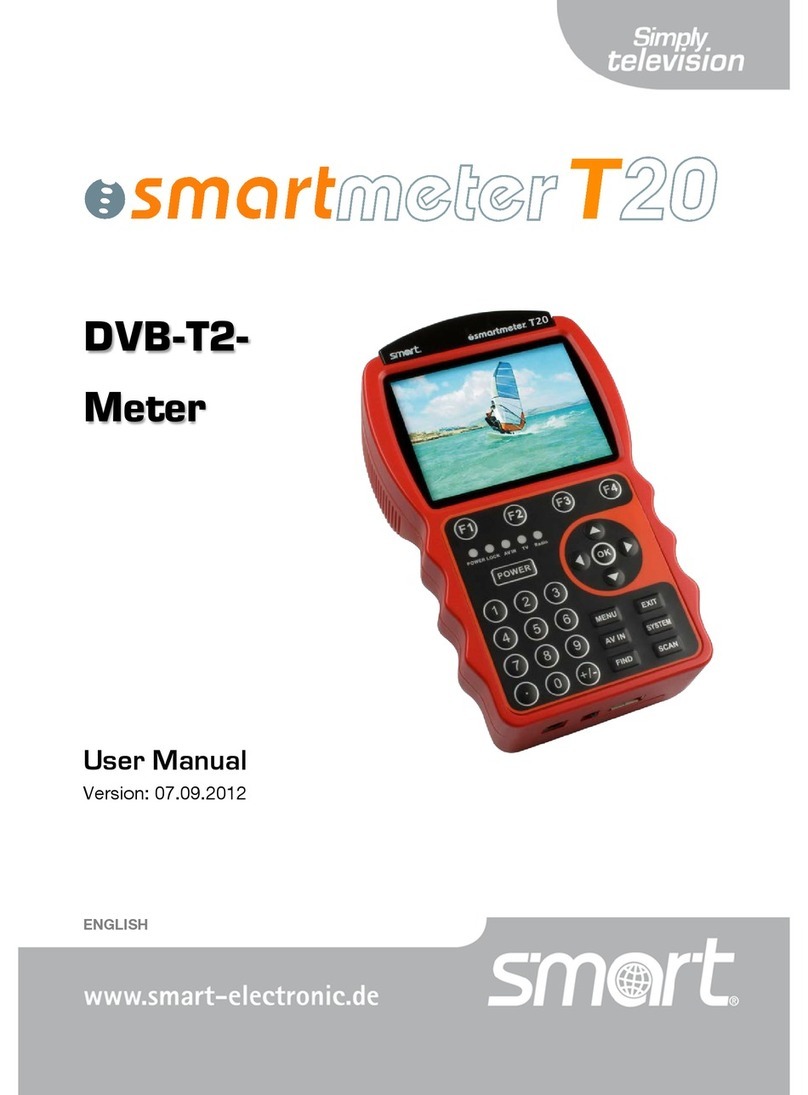
Smart Electronic
Smart Electronic SMARTMETER T20 user manual
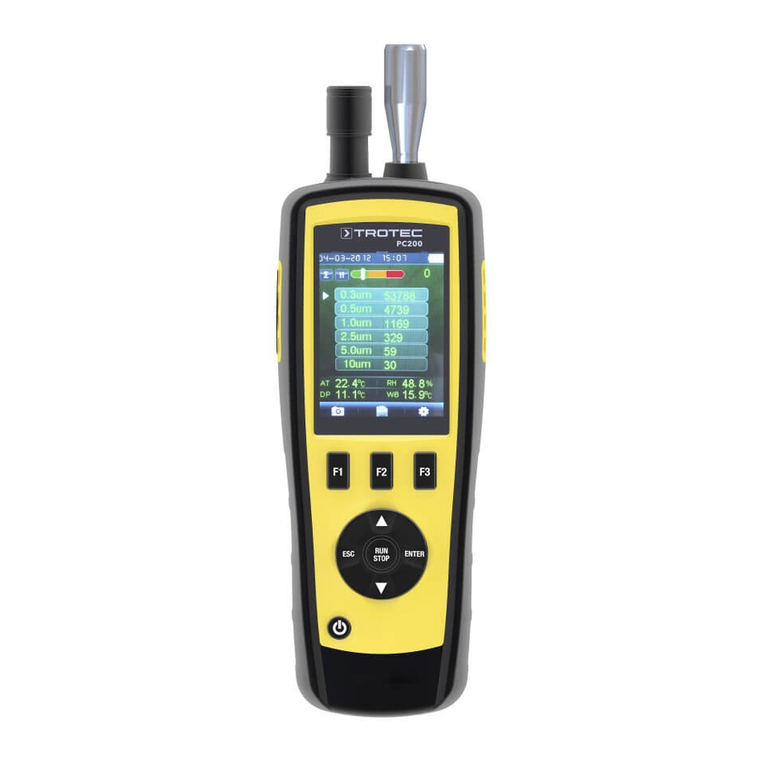
Trotec
Trotec PC200 manual
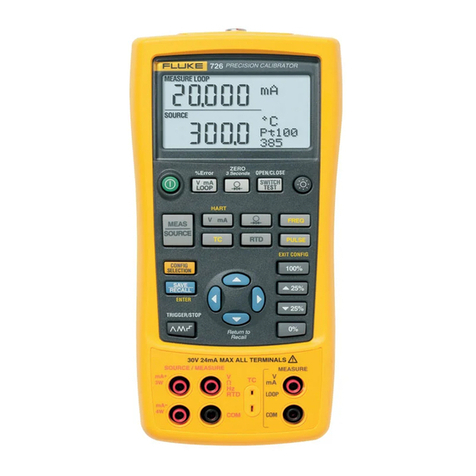
Fluke
Fluke 726 Manual supplement

Ludlum Measurements
Ludlum Measurements 3078 manual

Dr.Fodisch
Dr.Fodisch MCA 10 HWIR Operation manual
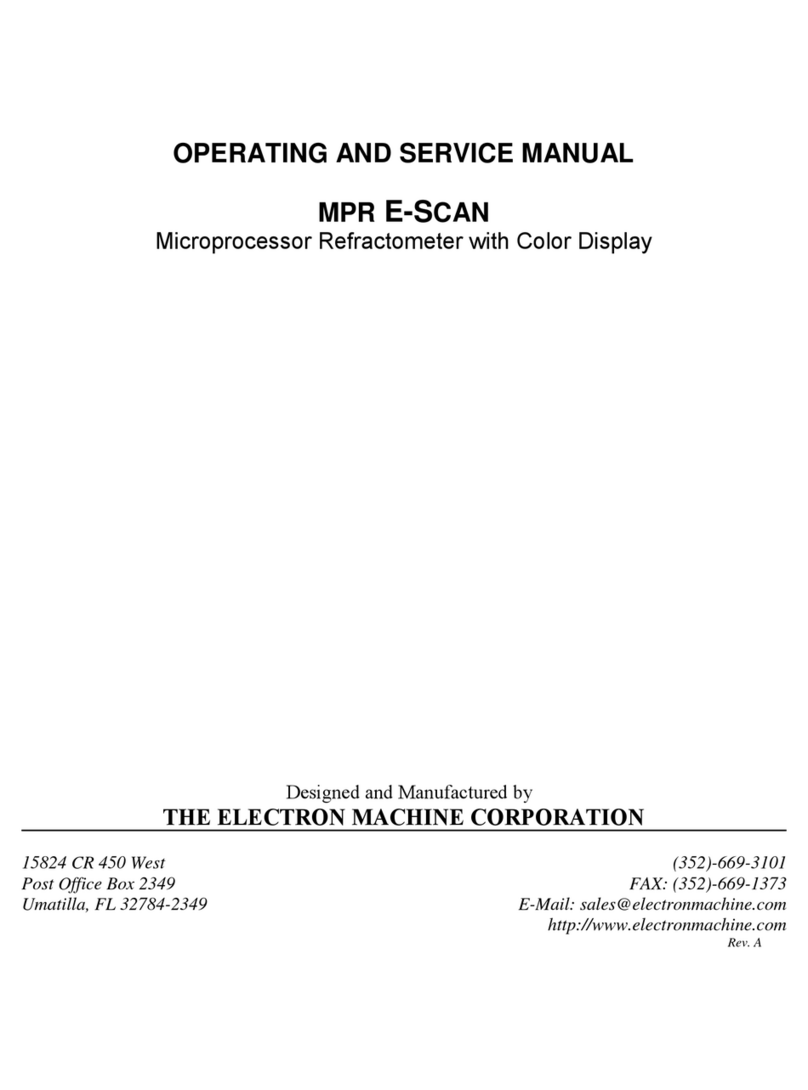
THE ELECTRON MACHINE CORPORATION
THE ELECTRON MACHINE CORPORATION MPR E-SCAN Operating and service manual
